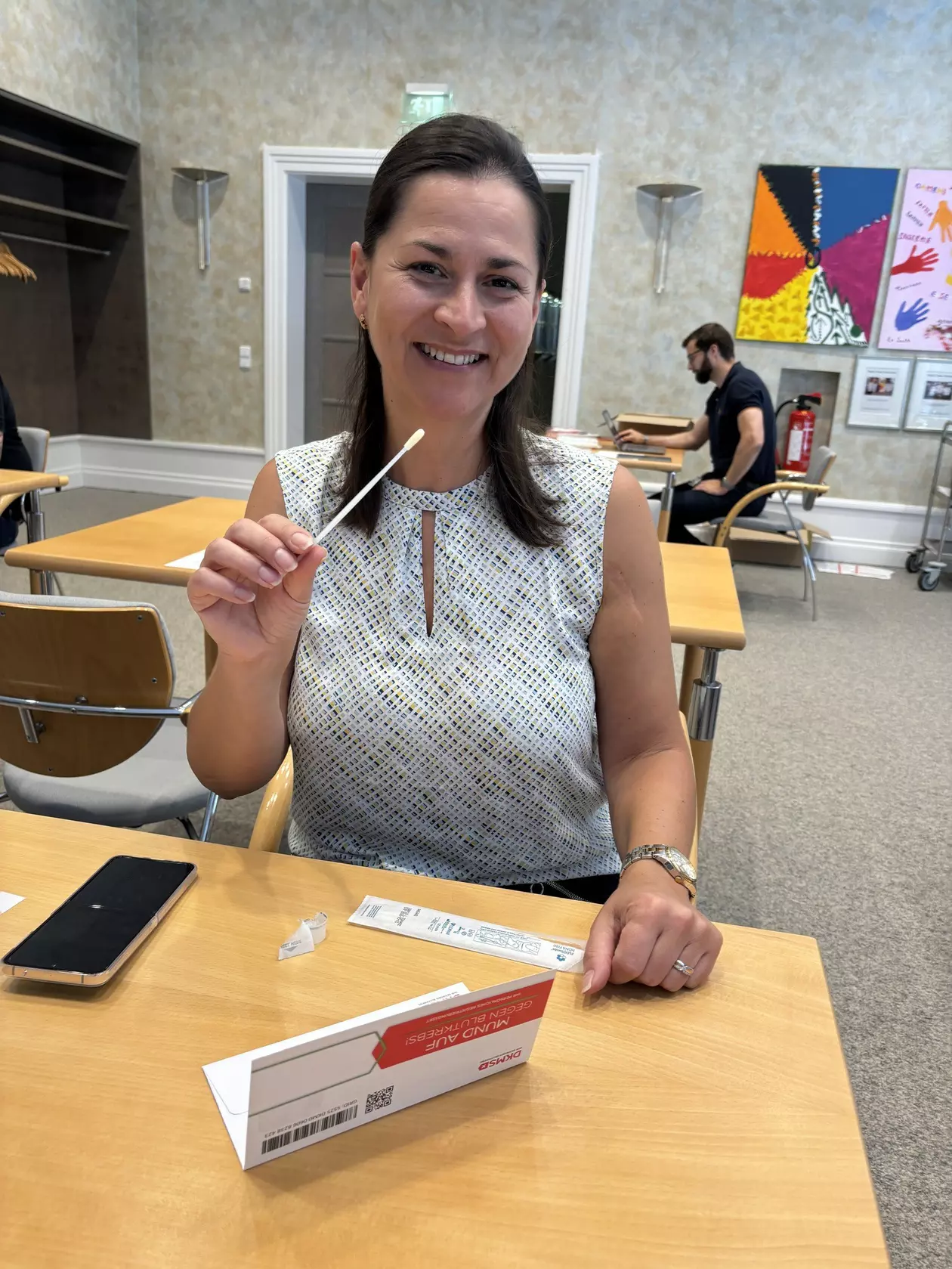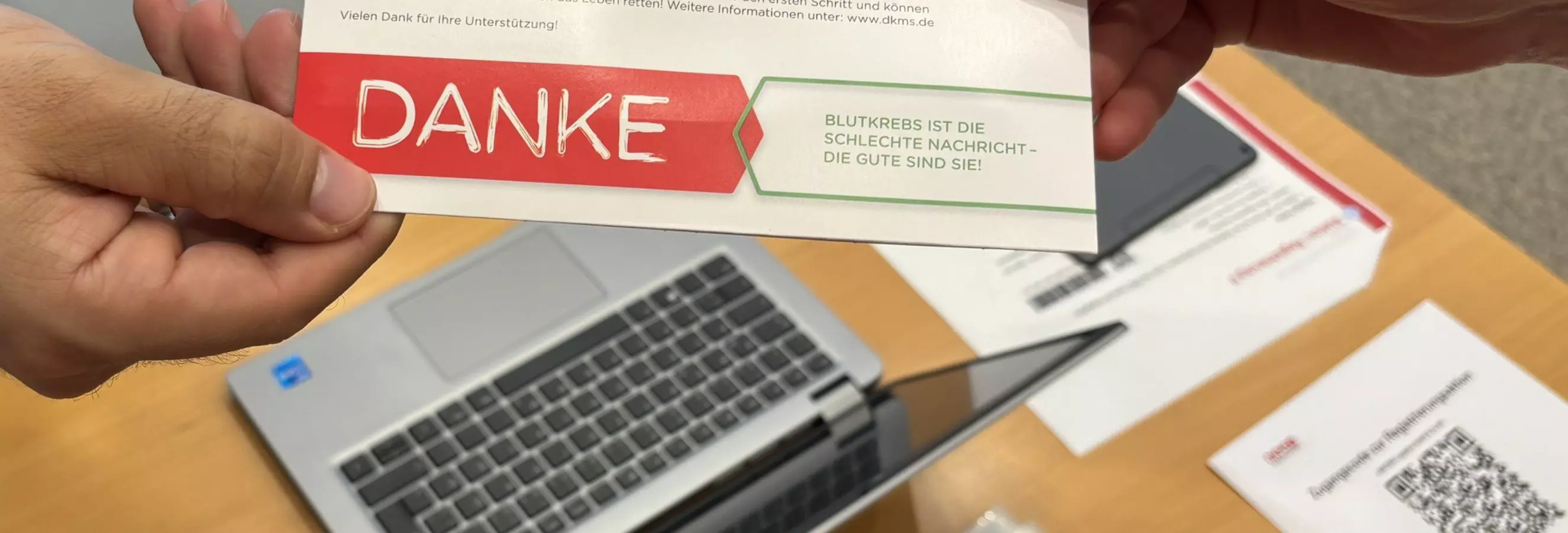DKMS registration campaign at HARTING
HARTING is once again sending out a strong signal in the fight against blood cancer. Together with the German Bone Marrow Donor Centre (DKMS), the Technology Group now organised a registration campaign in all German plants - with an overwhelming response: 158 employees became potential stem cell donors for a sick colleague and other affected persons worldwide.
Back in 2016, the company had already organised a registration campaign at Plant 1 on Marienwerder Straße as part of its Health Days and encouraged numerous employees to register in the DKMS database. The charitable organisation has now been contacted again to organise an even larger-scale, cross-plant collection of additional donor data. The employees themselves initiated the aid campaign and contacted the health management team at HARTING.
"The news about our colleague suffering from blood cancer hit us like a blow. However, we didn't want to stand by and do nothing, we wanted to actively help," emphasises Tim Franke, HR Professional in Health Management at HARTING. "It is very impressive to see how willing our colleagues are to save lives. This wave of helpfulness to help was overwhelming. That shows: We stand together."
A large number of employees are already registered, and now 158 more have followed suit. They initiated the campaign from within their own ranks and responded to the current call to join the stem cell donor register. Many also took advantage of the opportunity to order registration kits for home delivery via the website, thereby involving family members and friends in the campaign. HARTING covers the costs for a new registration at 50 euros per participant.
For Paula Stoll, Sales Specialist at HARTING Automotive, the support was a matter of course: "I didn't hesitate for a moment to help and also to give courage and hope by taking part. The registration itself is done in just a few simple steps - it's basically like a coronavirus test: you take a swab of the cheek mucosa with a cotton swab, then the swab and signed consent form are sent to the laboratory - that's it."
Incidentally, if you are then considered as a donor after being included in the DKMS database, bone marrow is only harvested from the iliac crest in 10 per cent of cases. Tim Franke, who has already donated stem cells himself, explains: "The most common method is so-called 'peripheral stem cell harvesting'. This involves extracting the stem cells from the blood. Similar to a blood donation, an access to the arm vein is established. Beforehand, the intake of a medication ensures that the increased production of stem cells is stimulated and these are then flushed out via the bloodstream during the collection."

Paula Stoll from the HARTING Technology Group has declared her commitment: she wants to be included in the data base for stem cell donations.

Detlef Sieverdingbeck
Position: General Manager Corporate Communication & Branding
- Department: CCB
- Company: HARTING Stiftung & Co. KG
